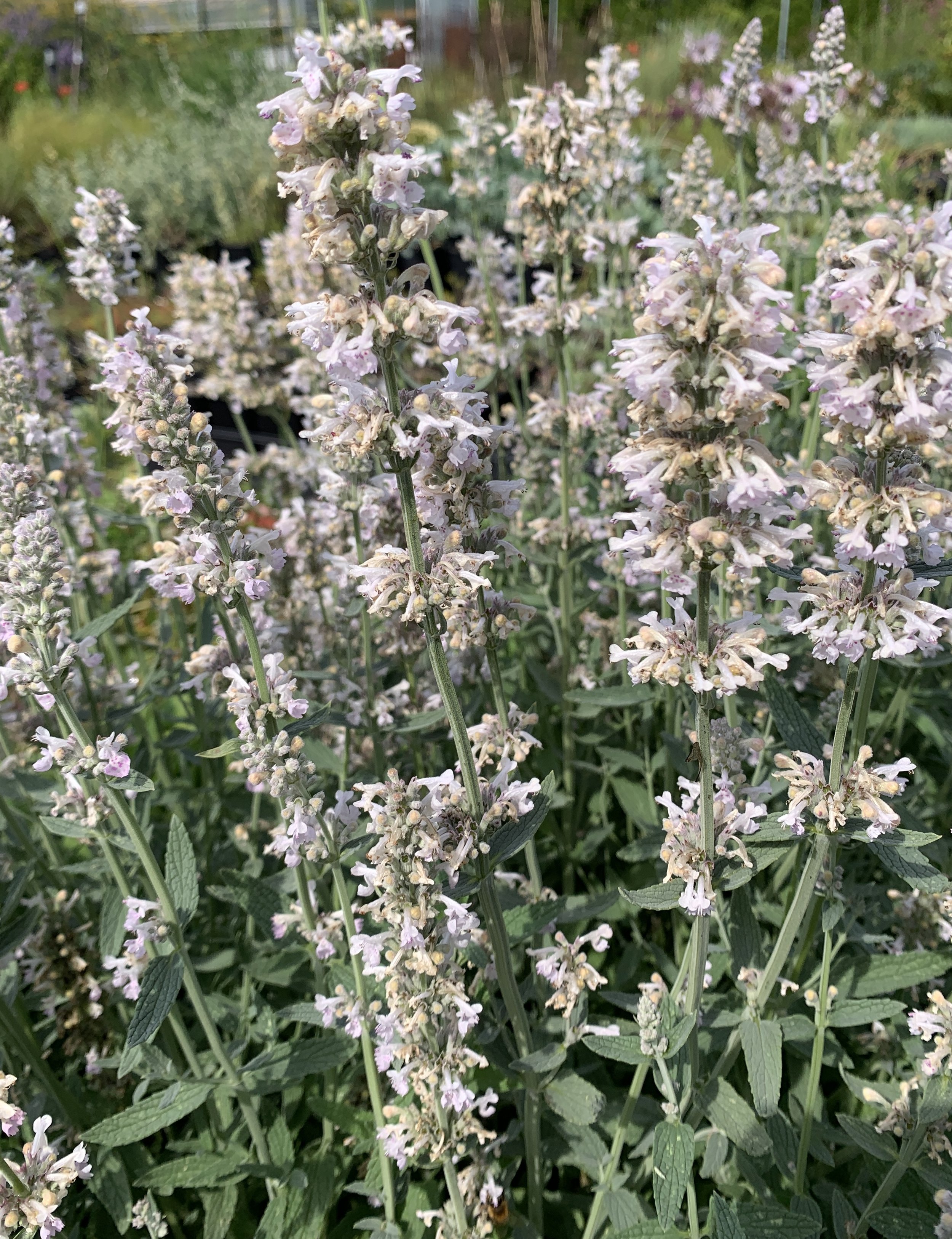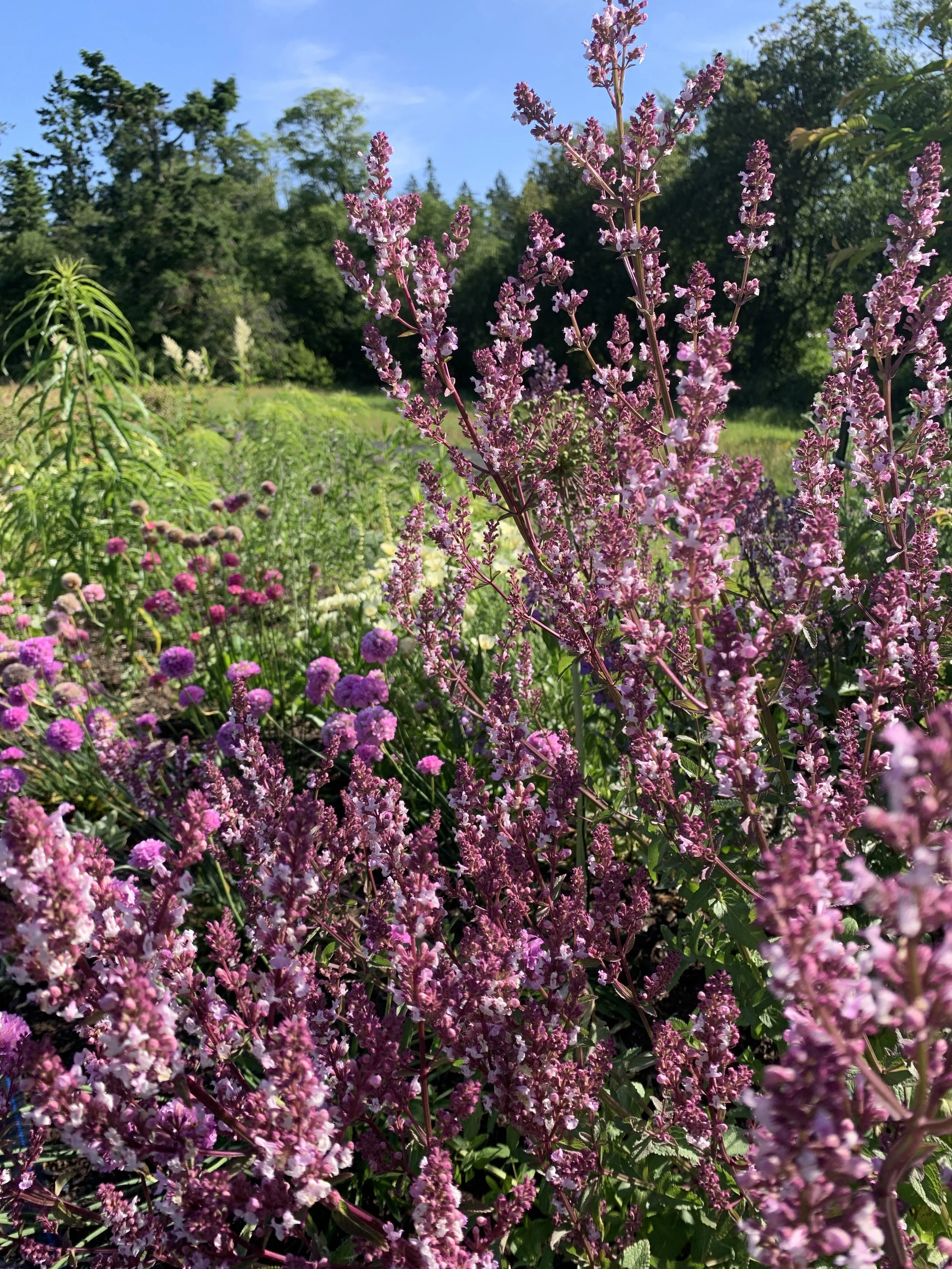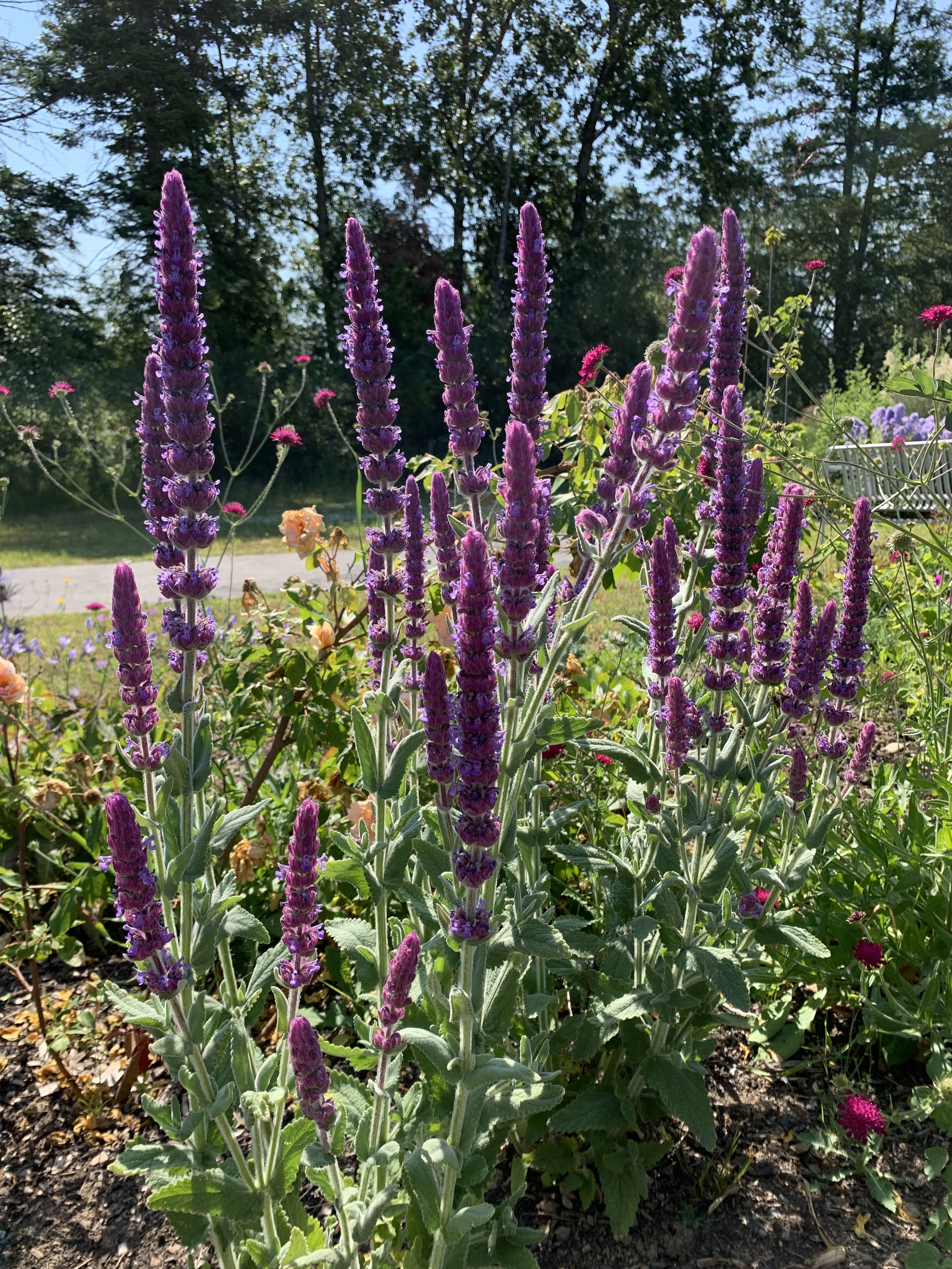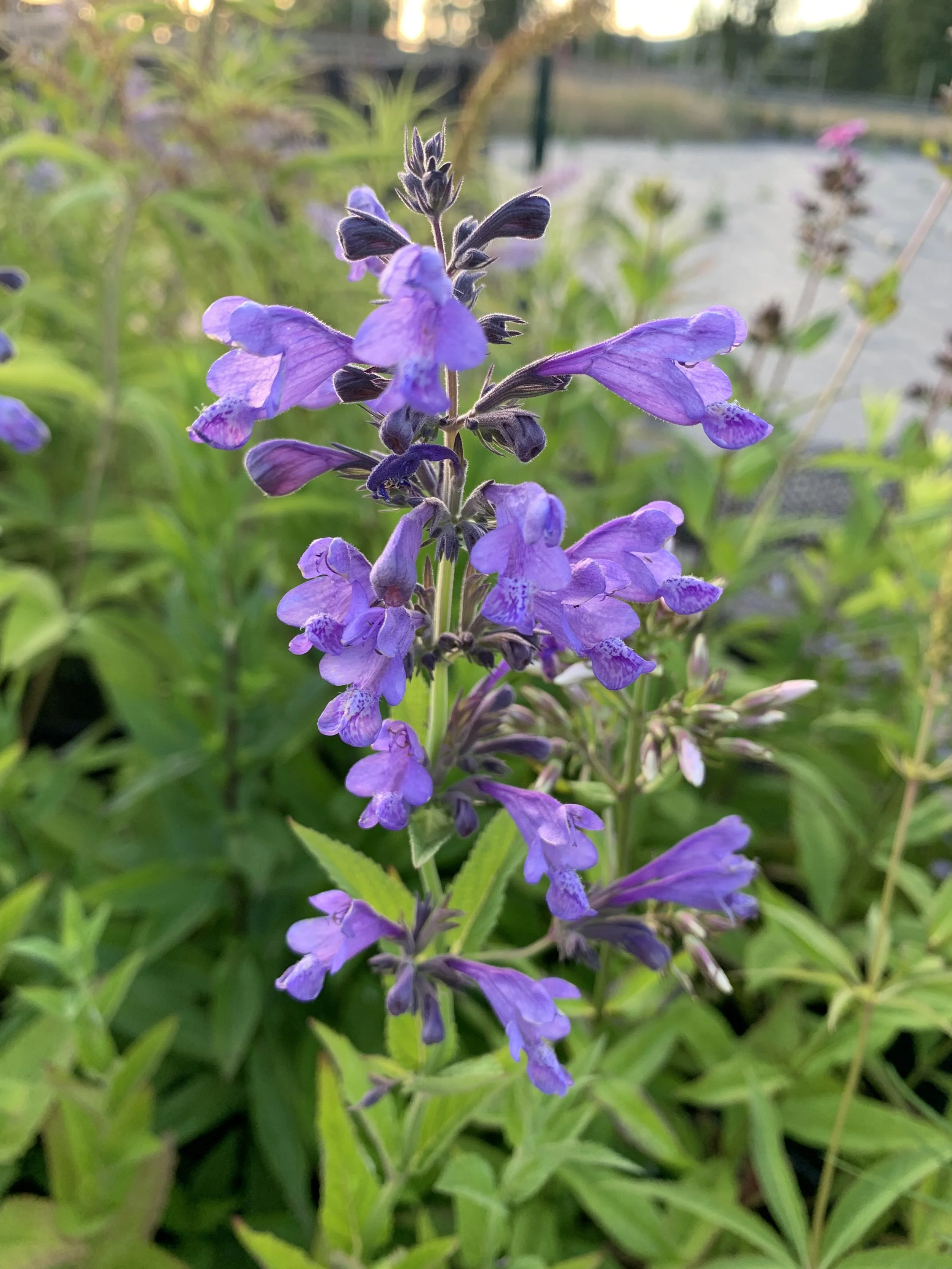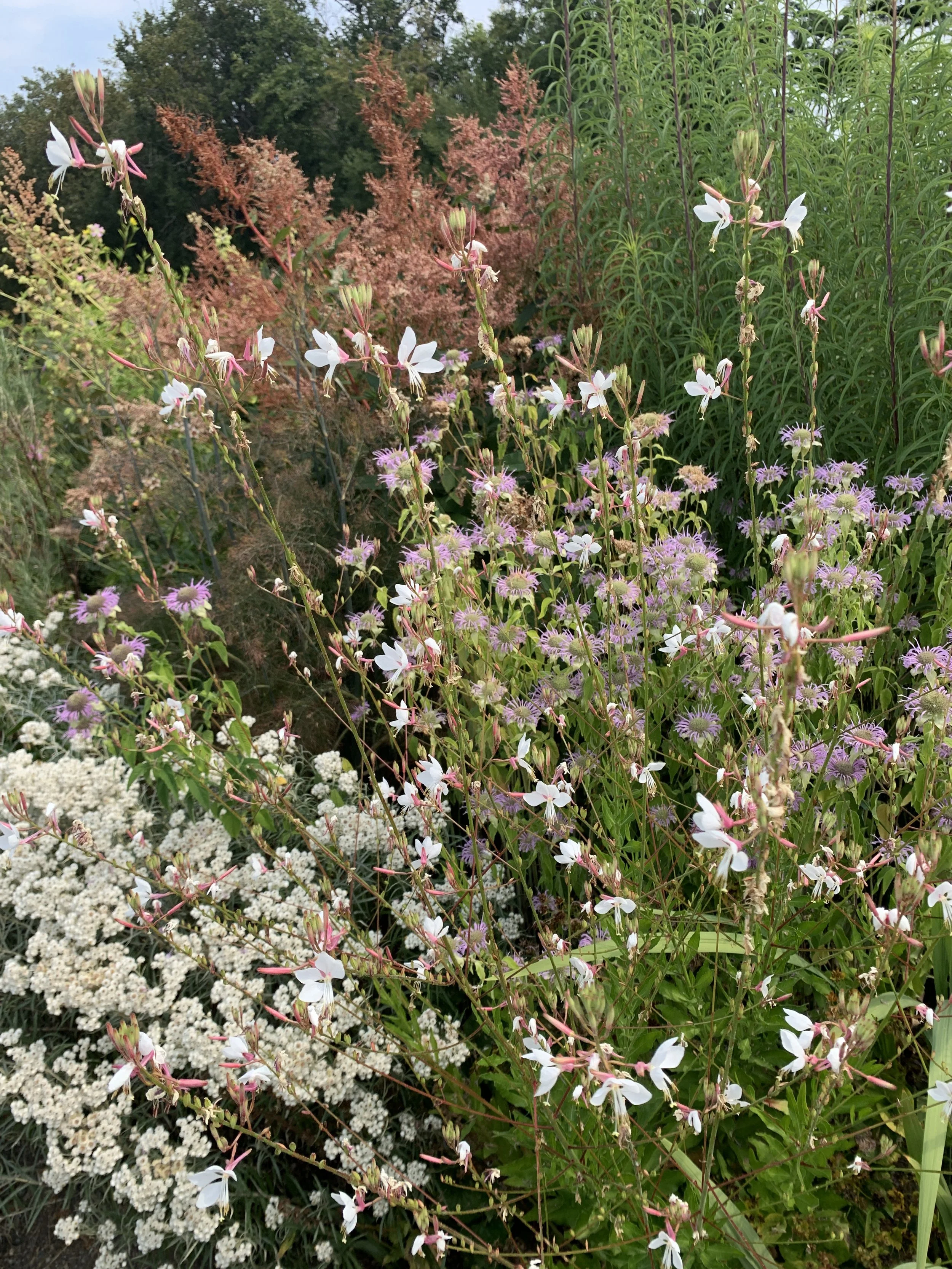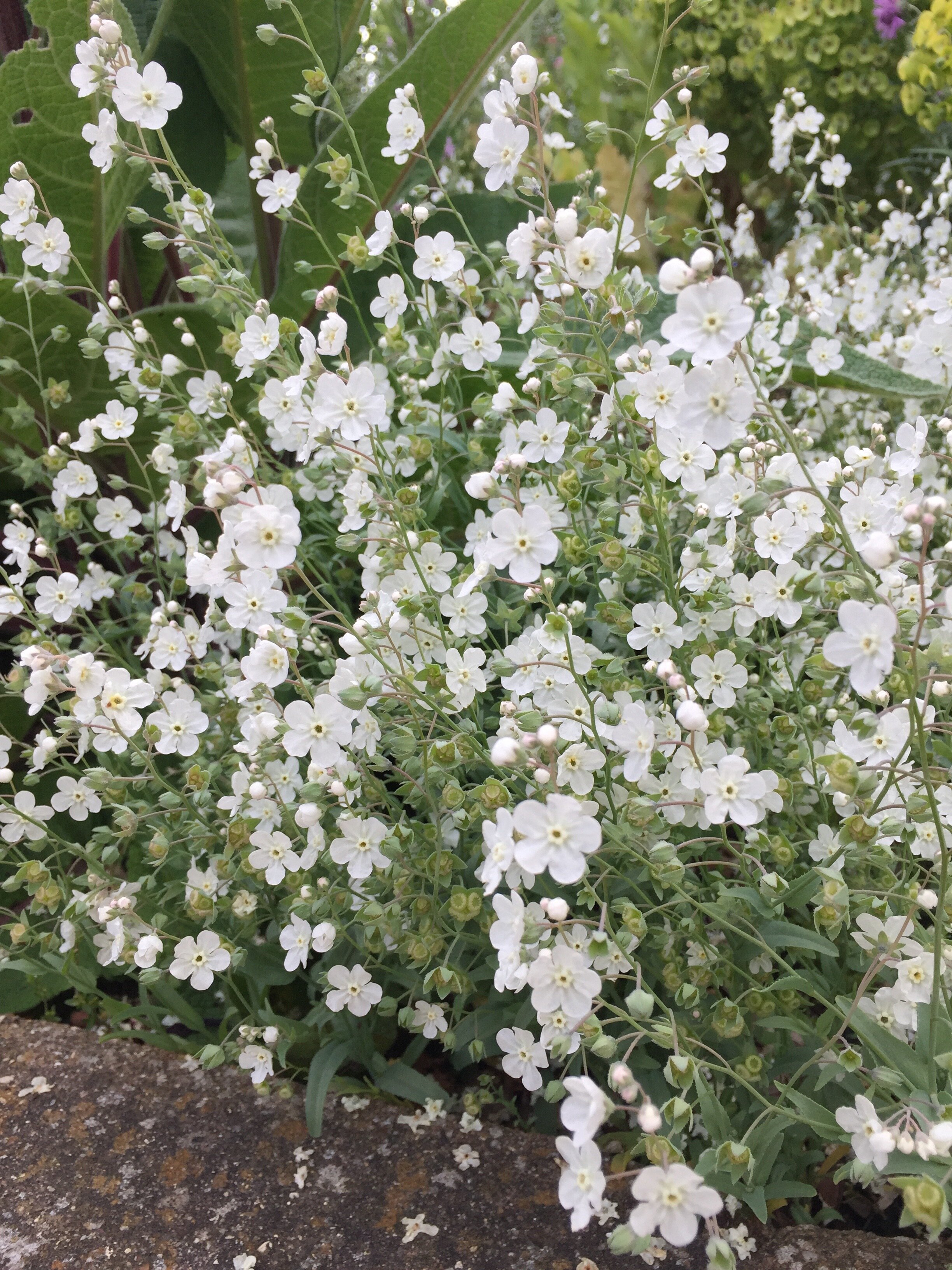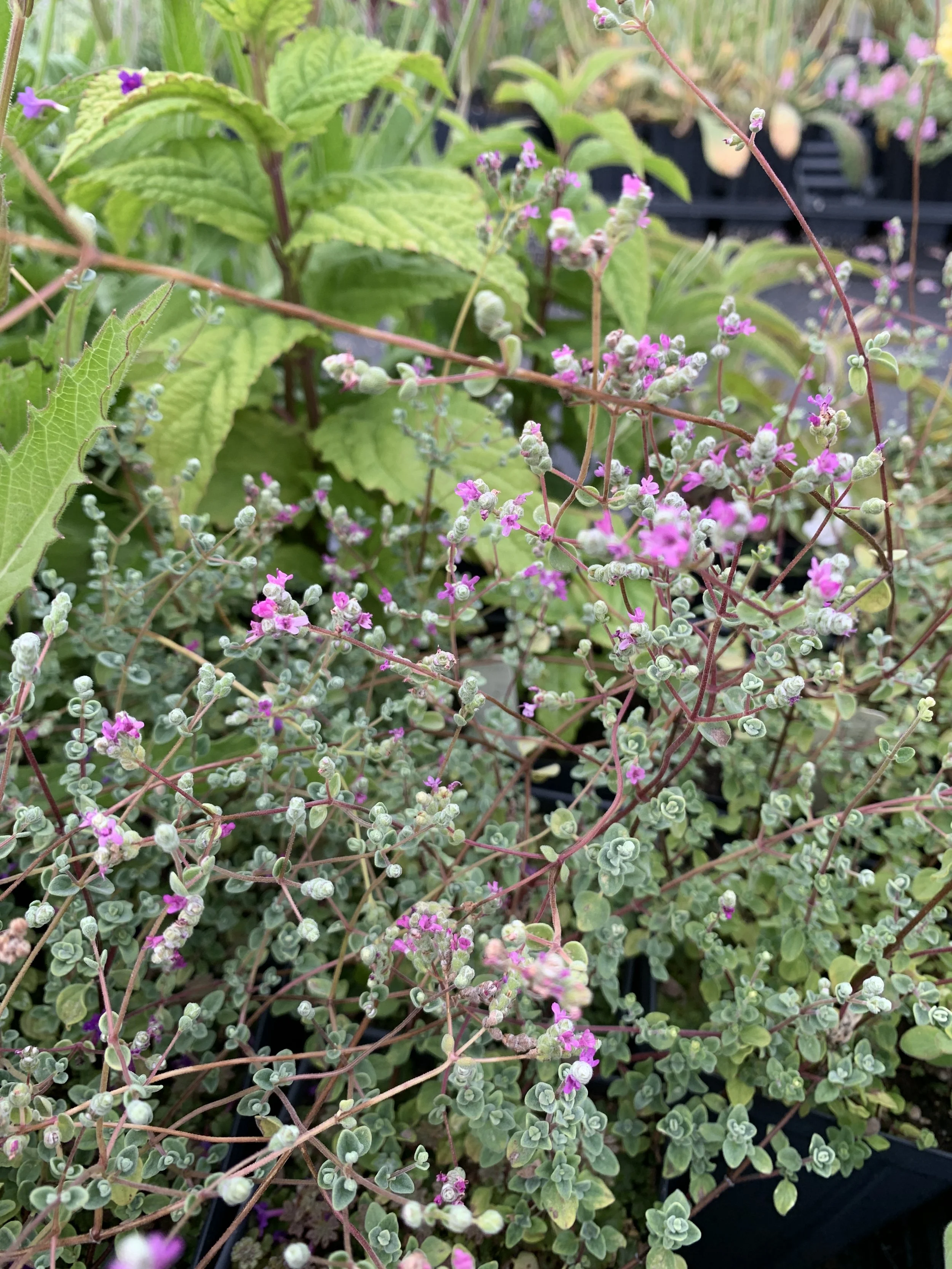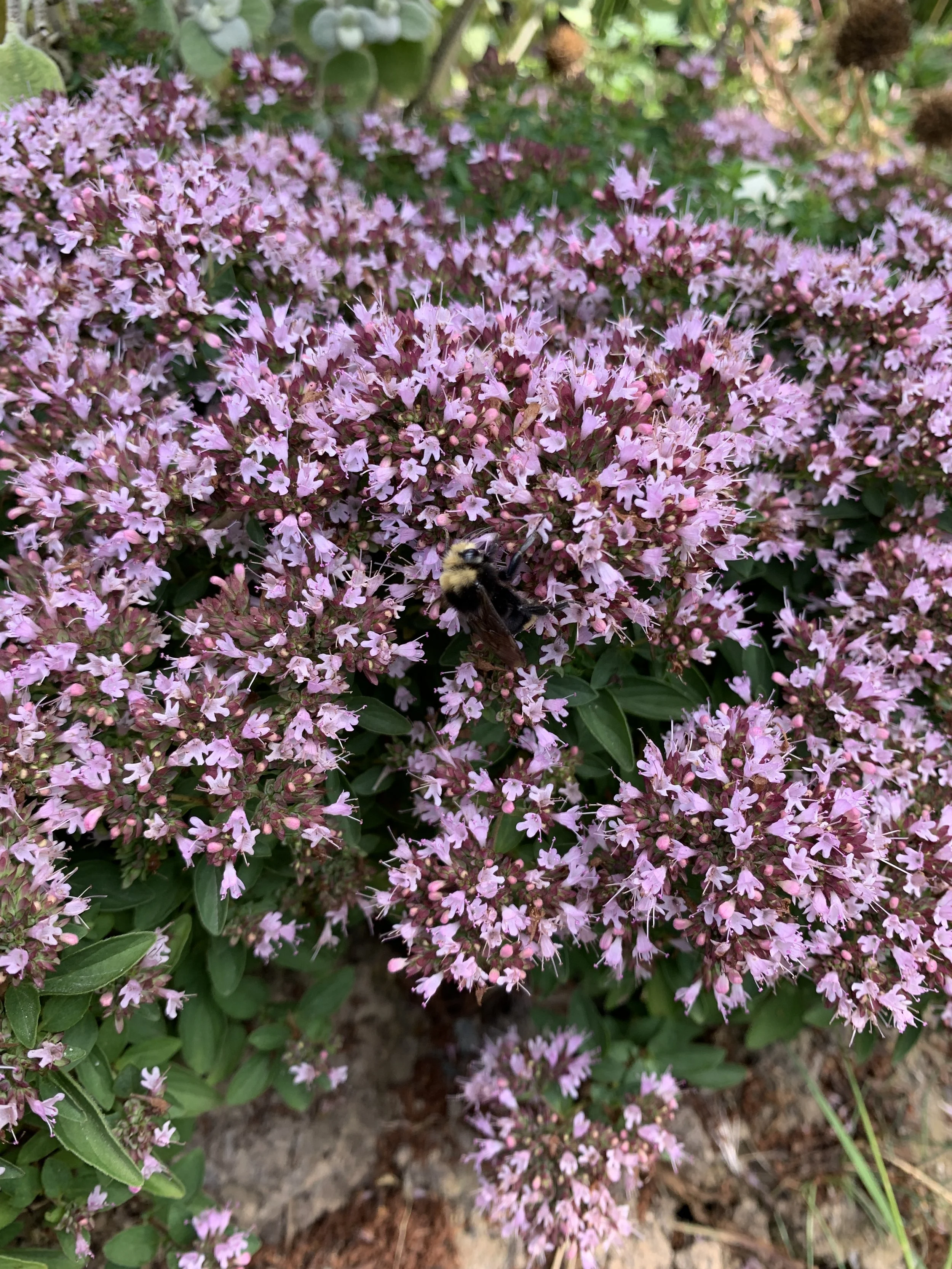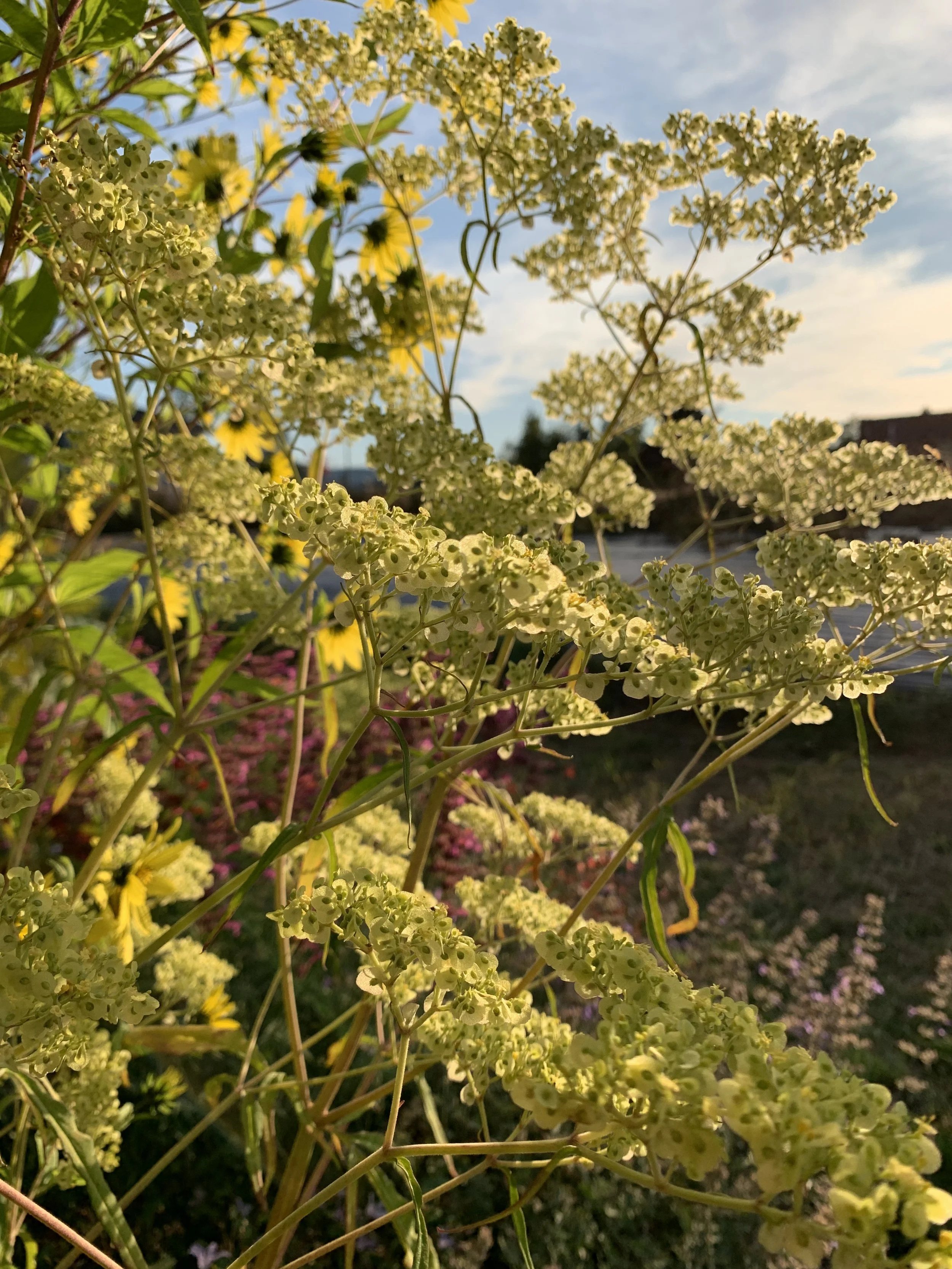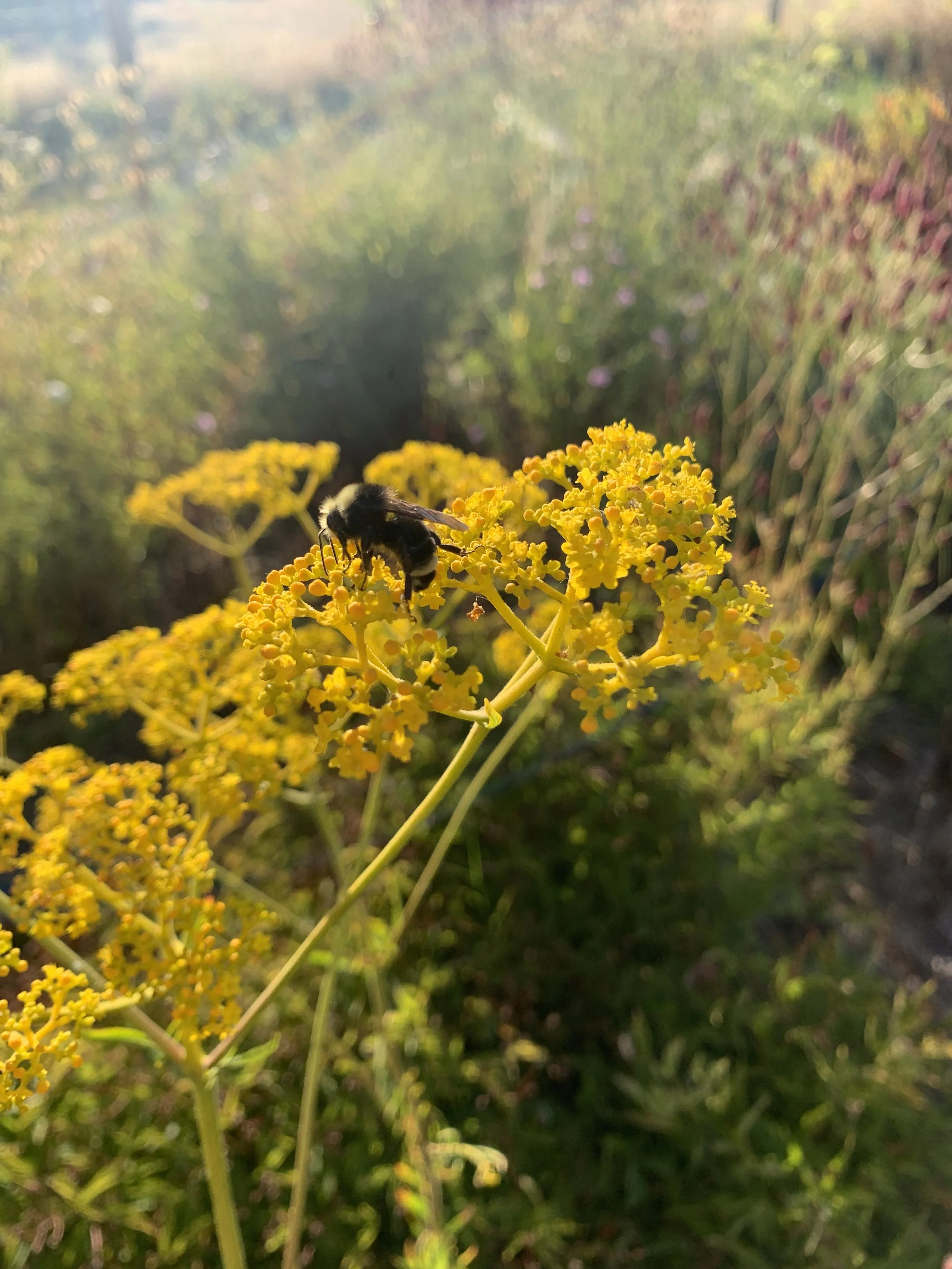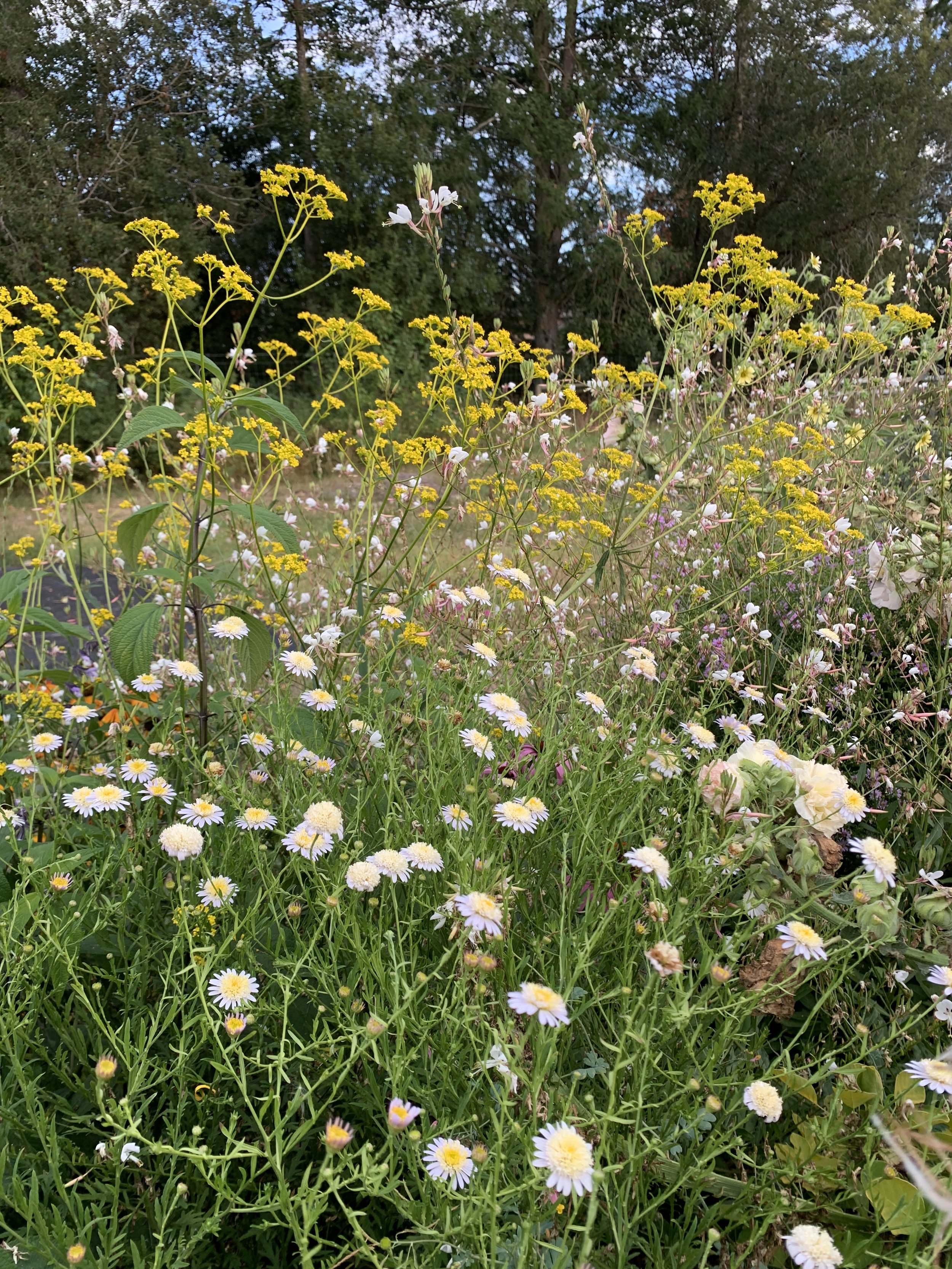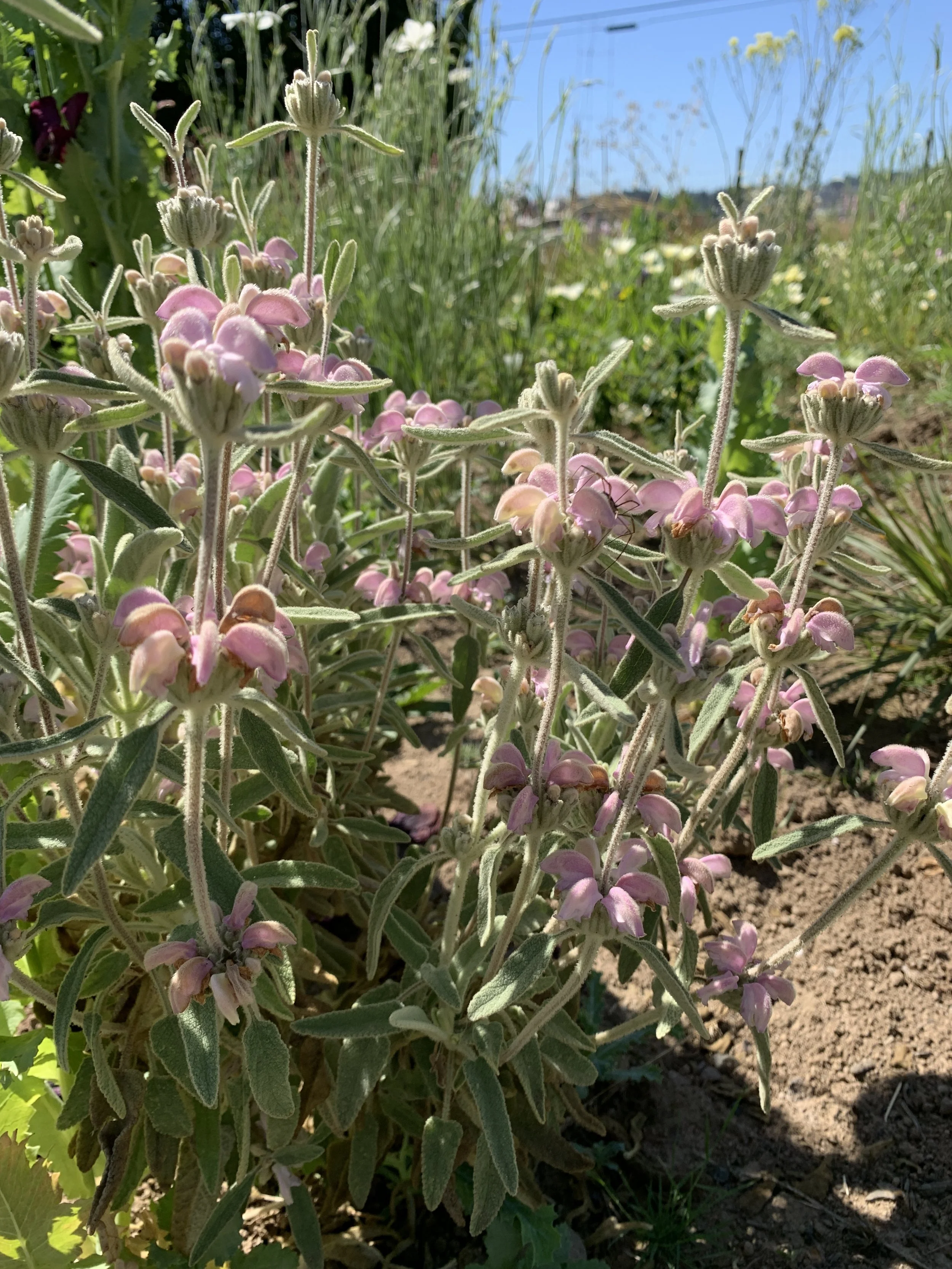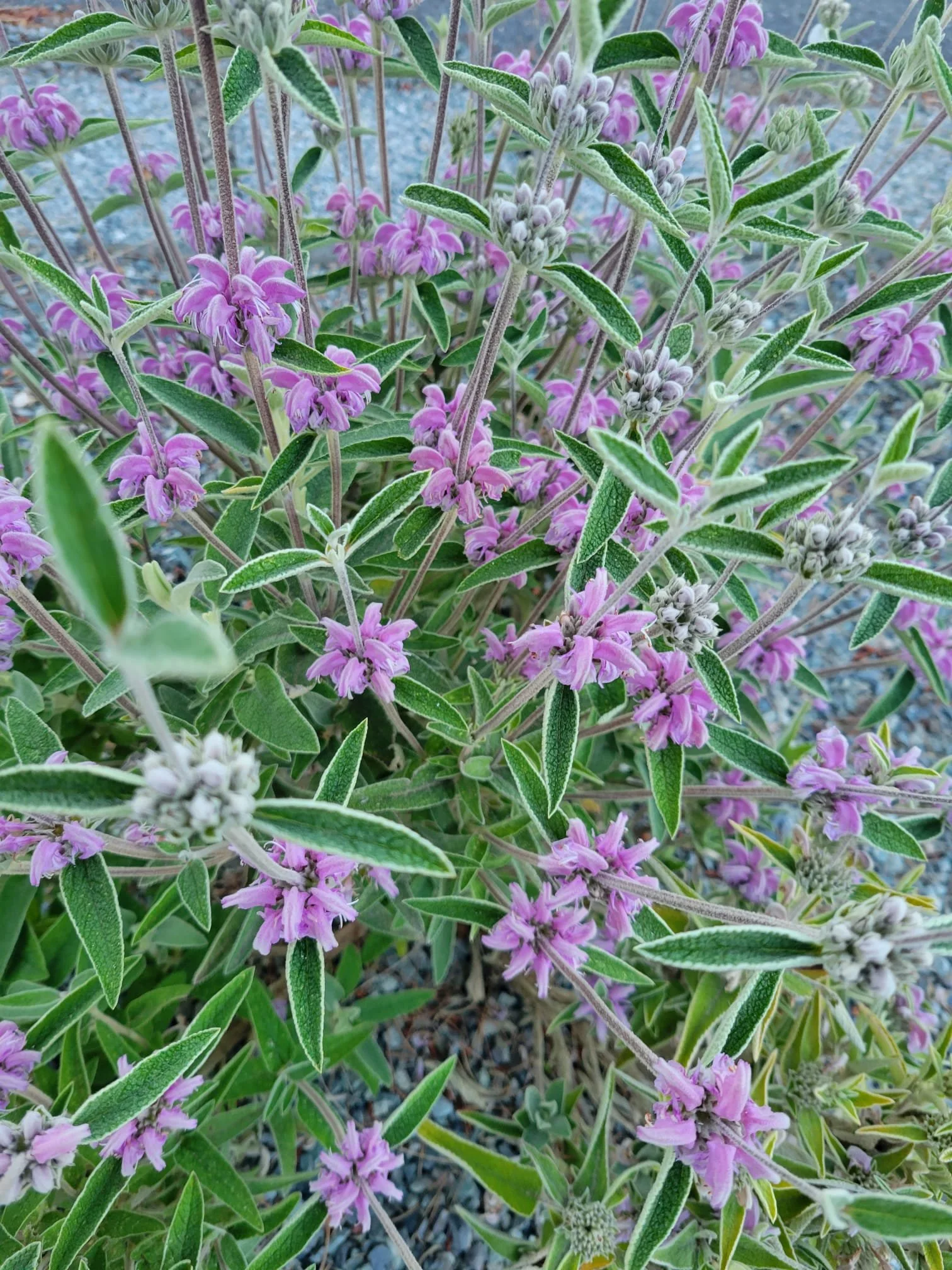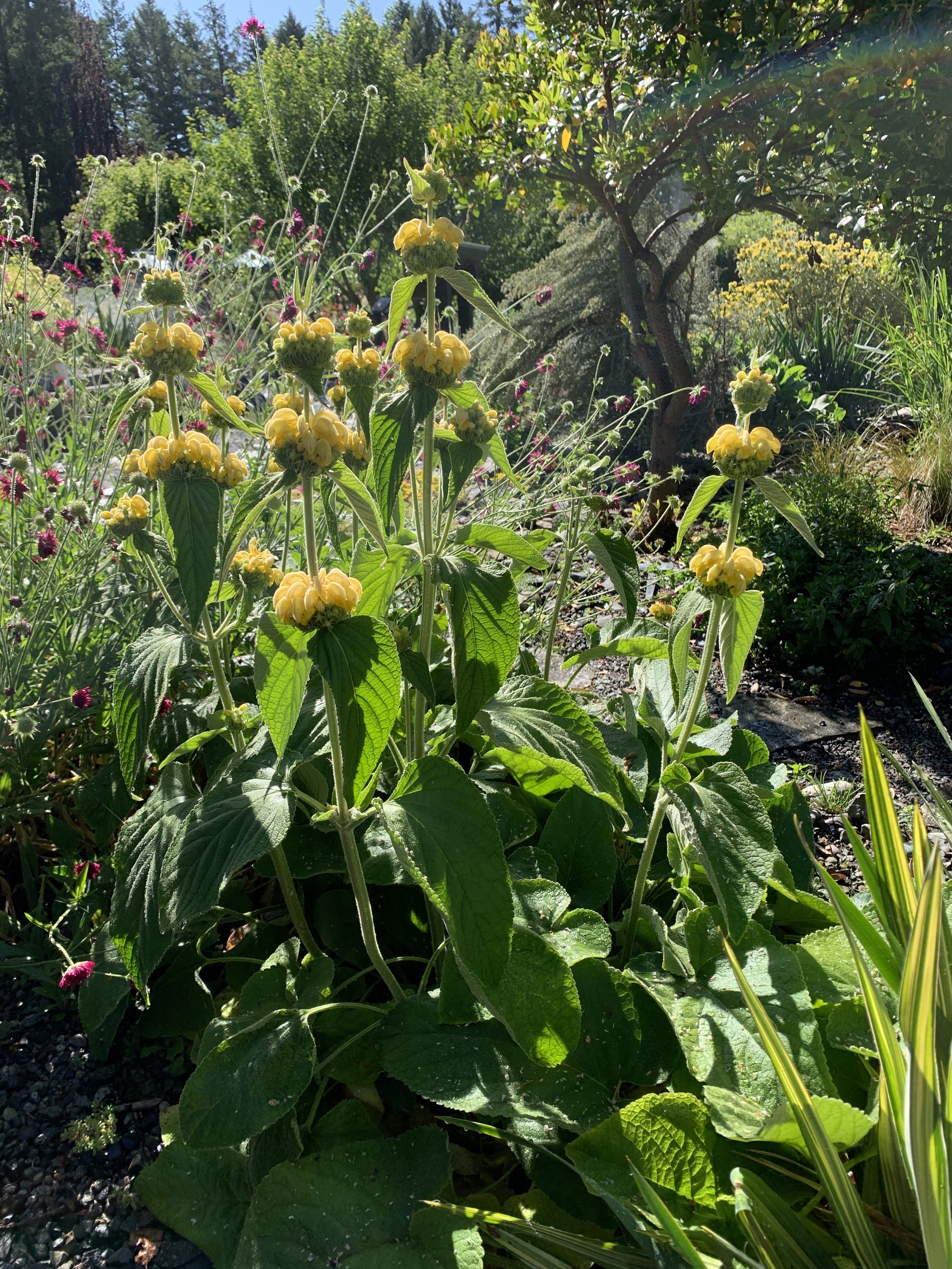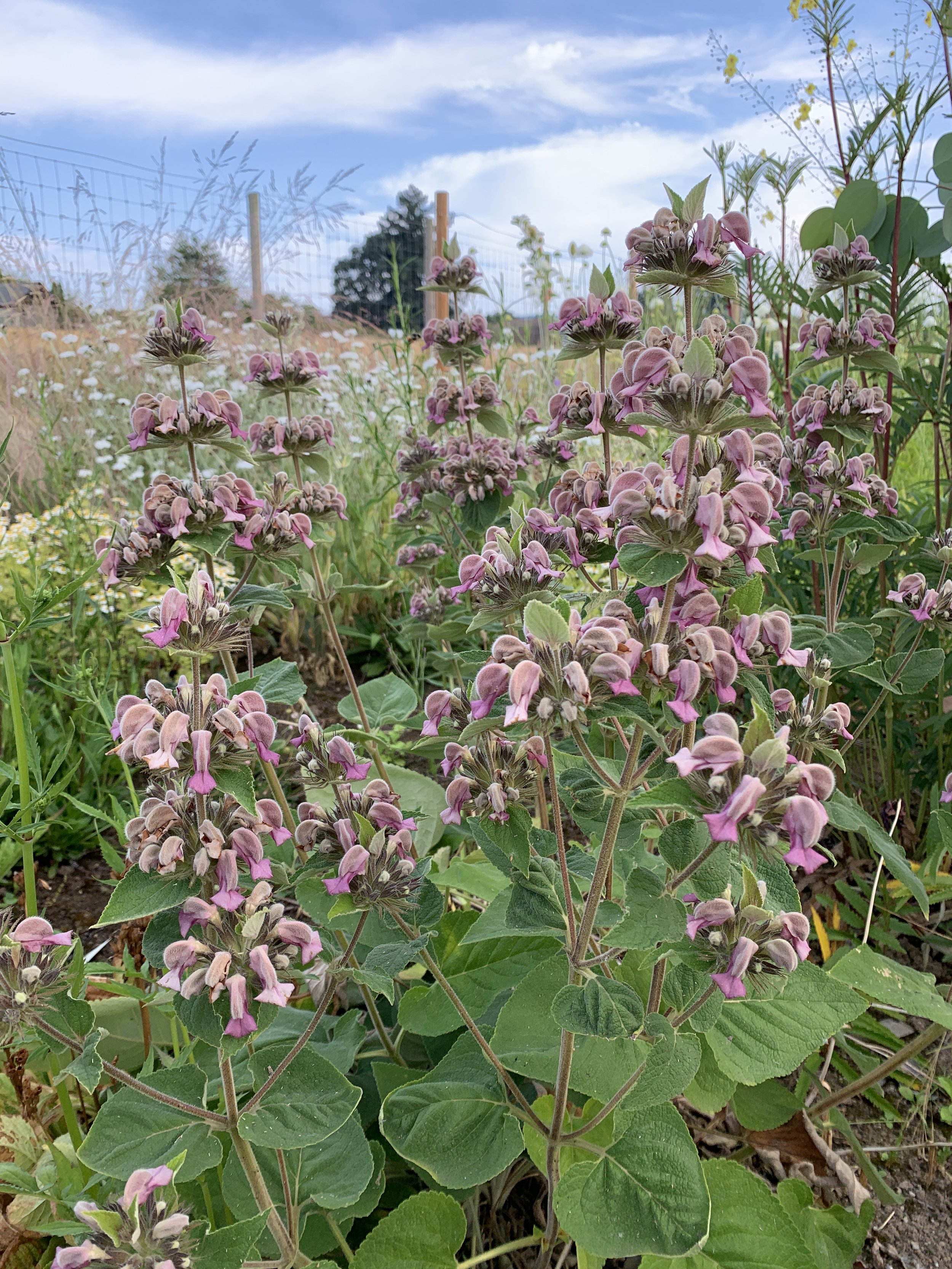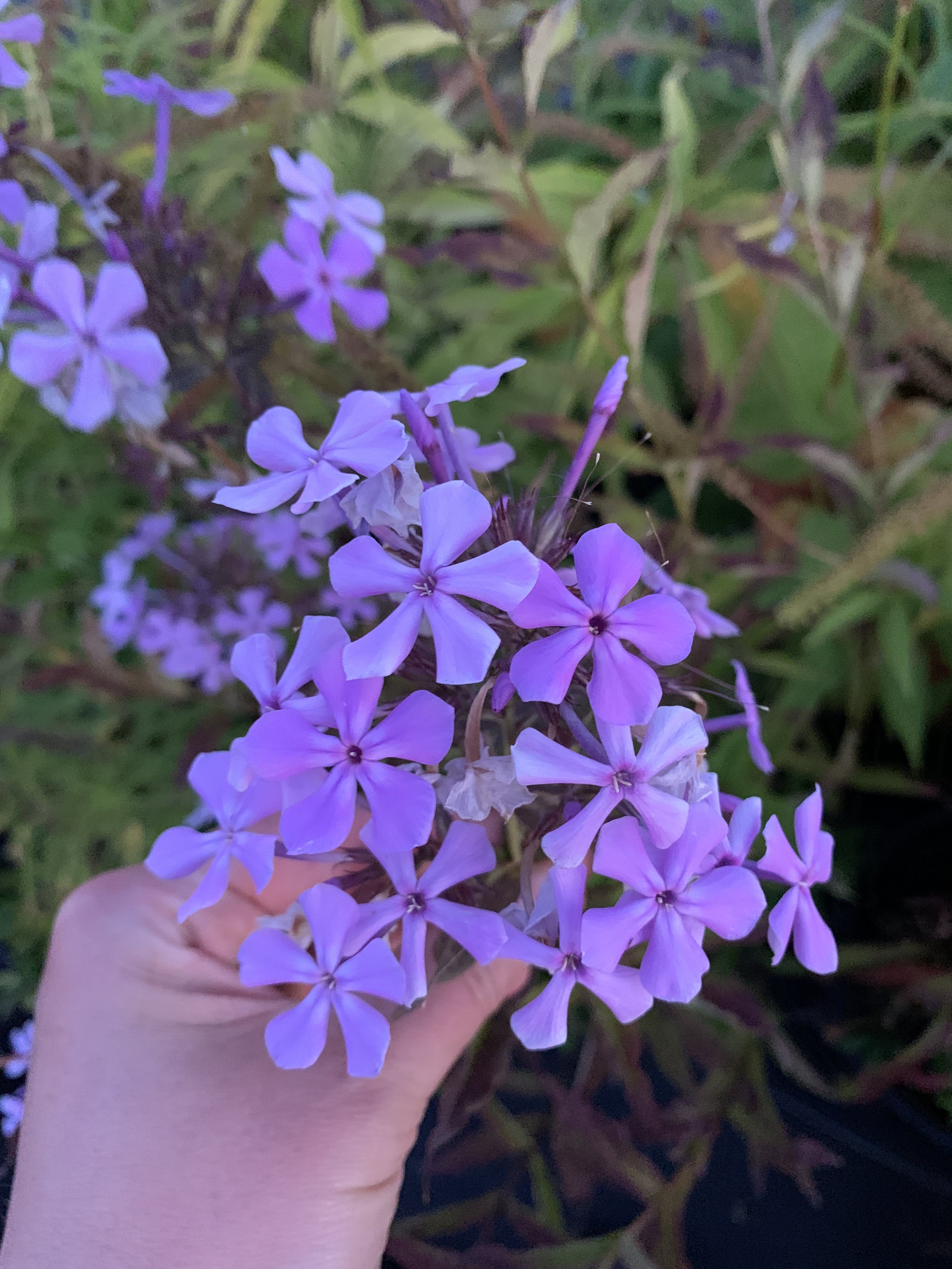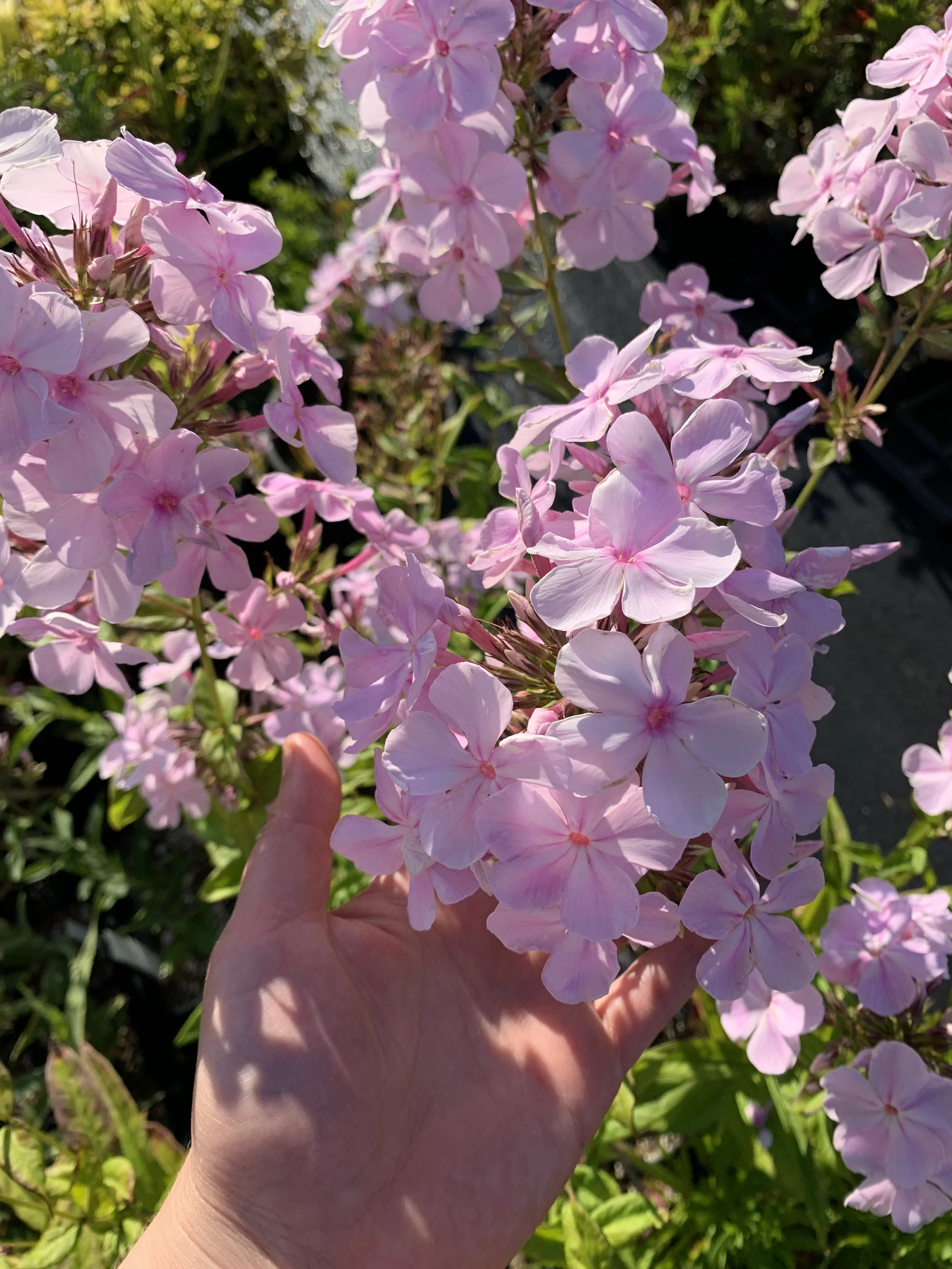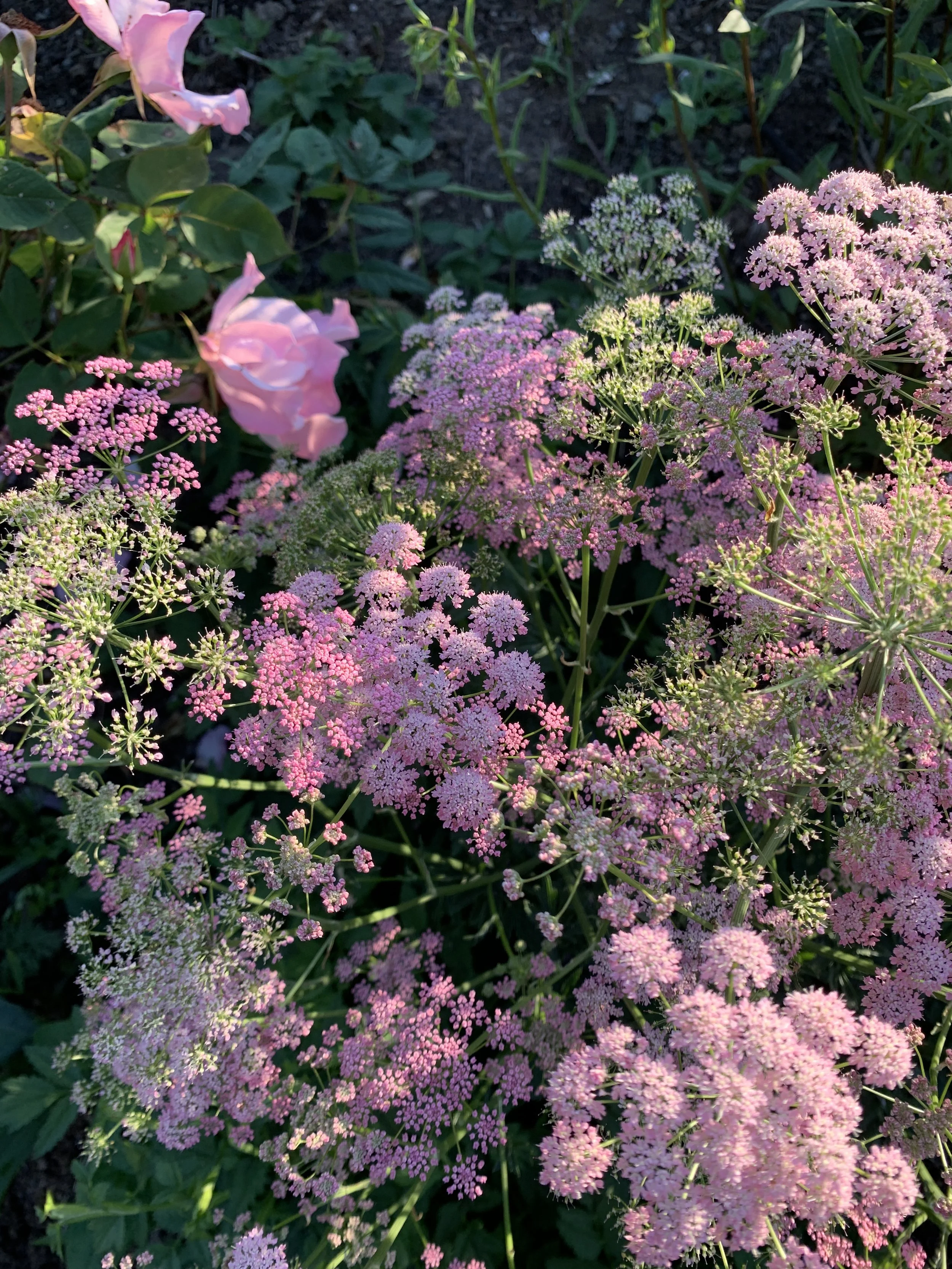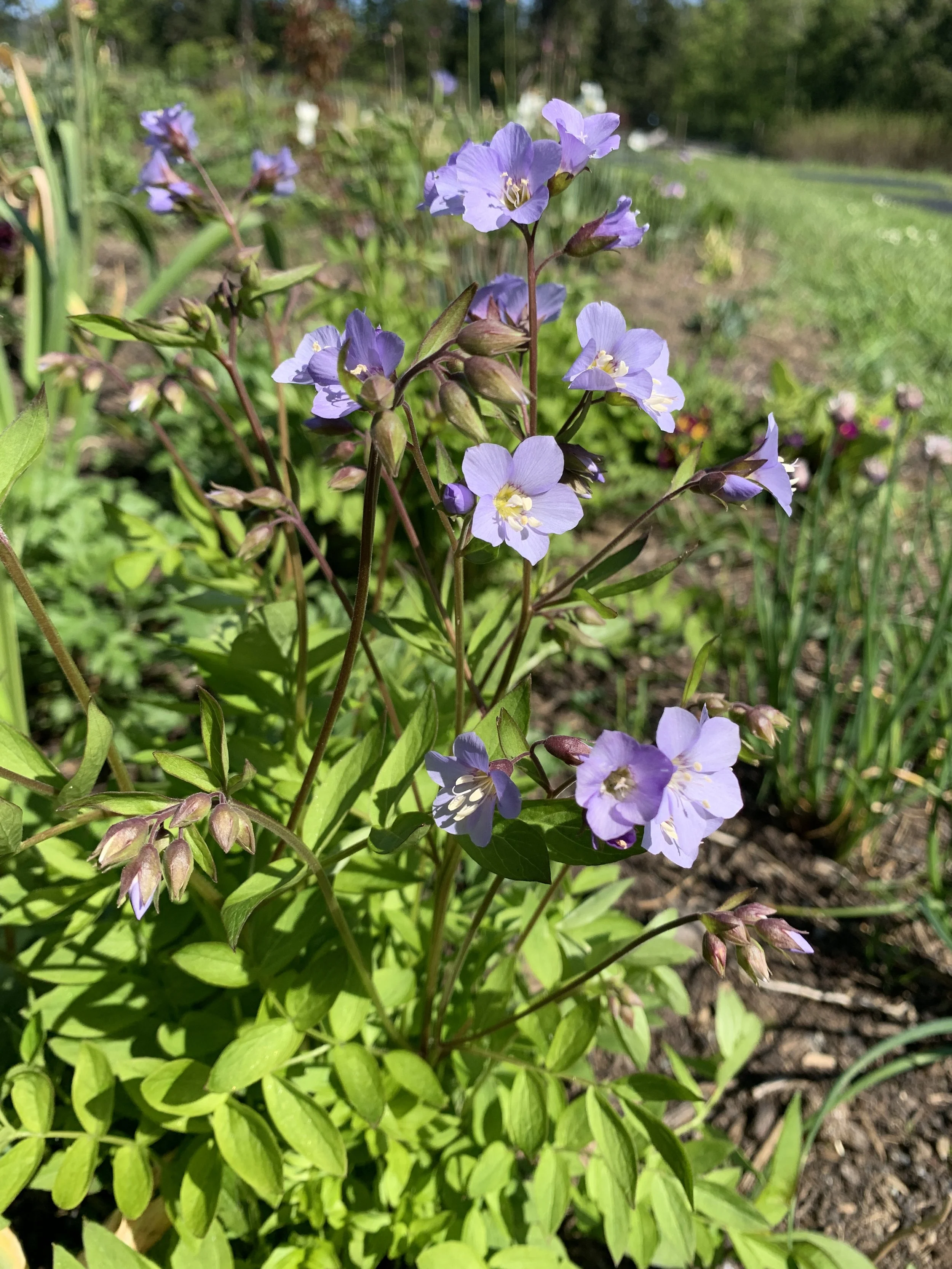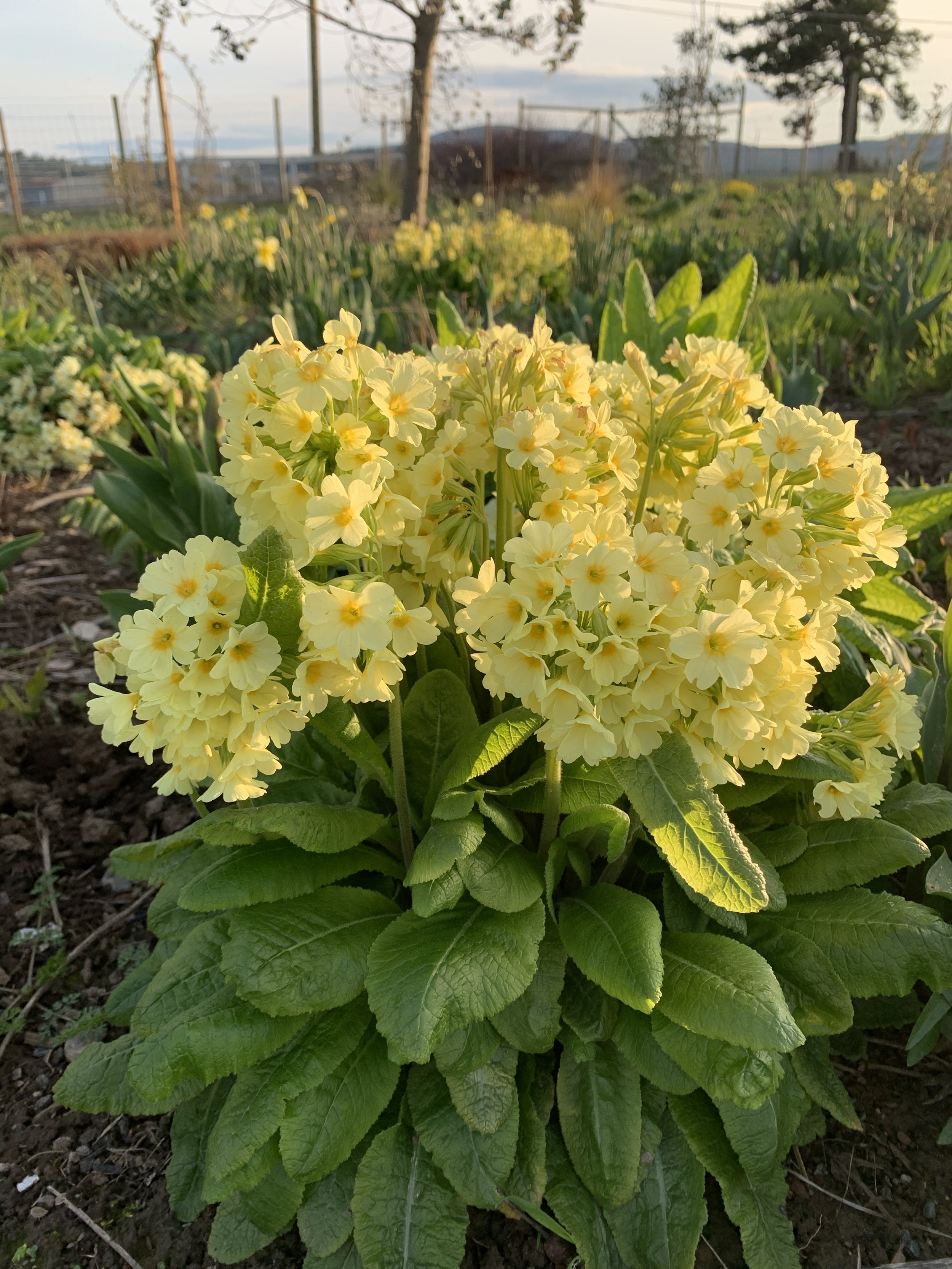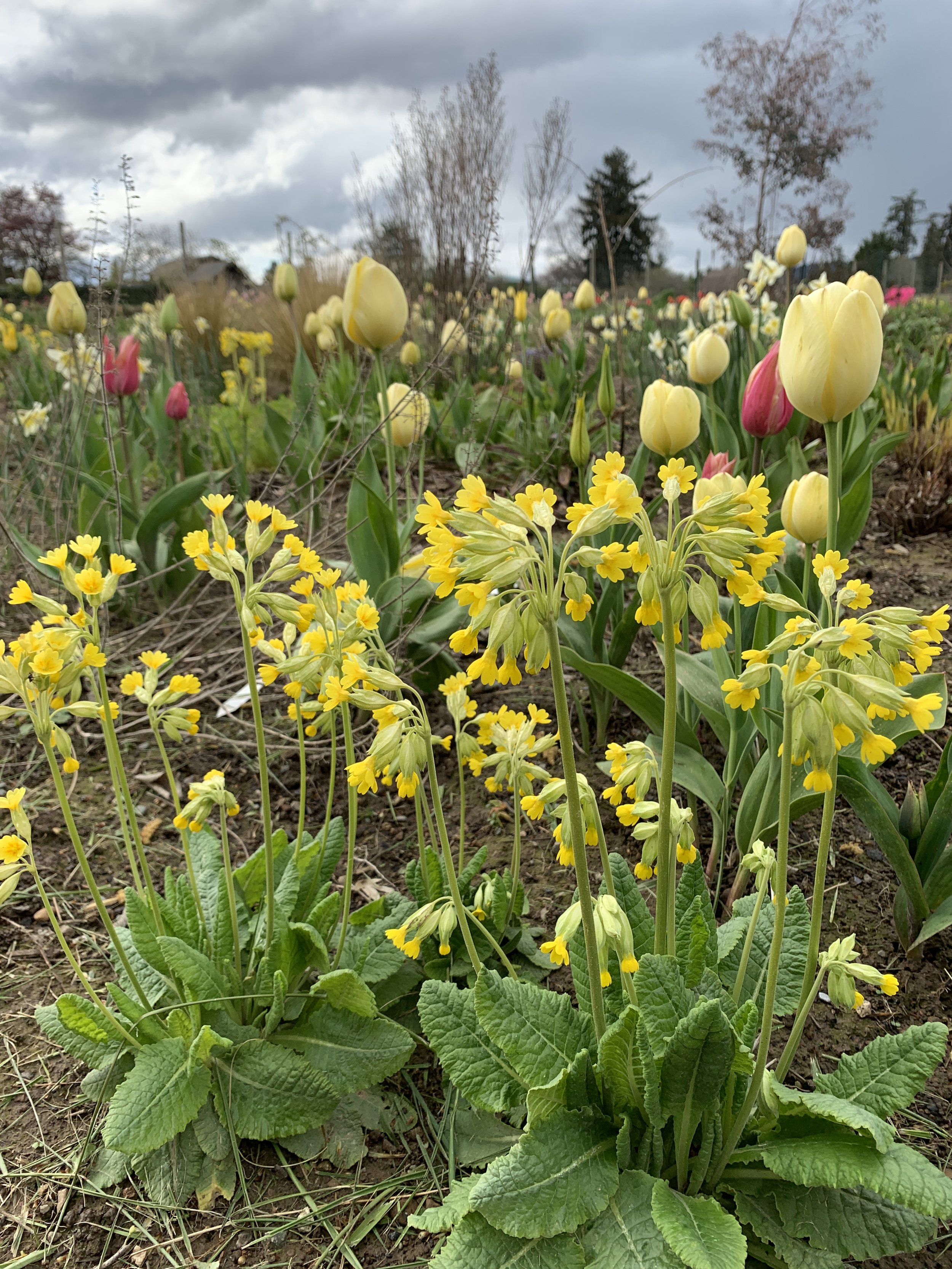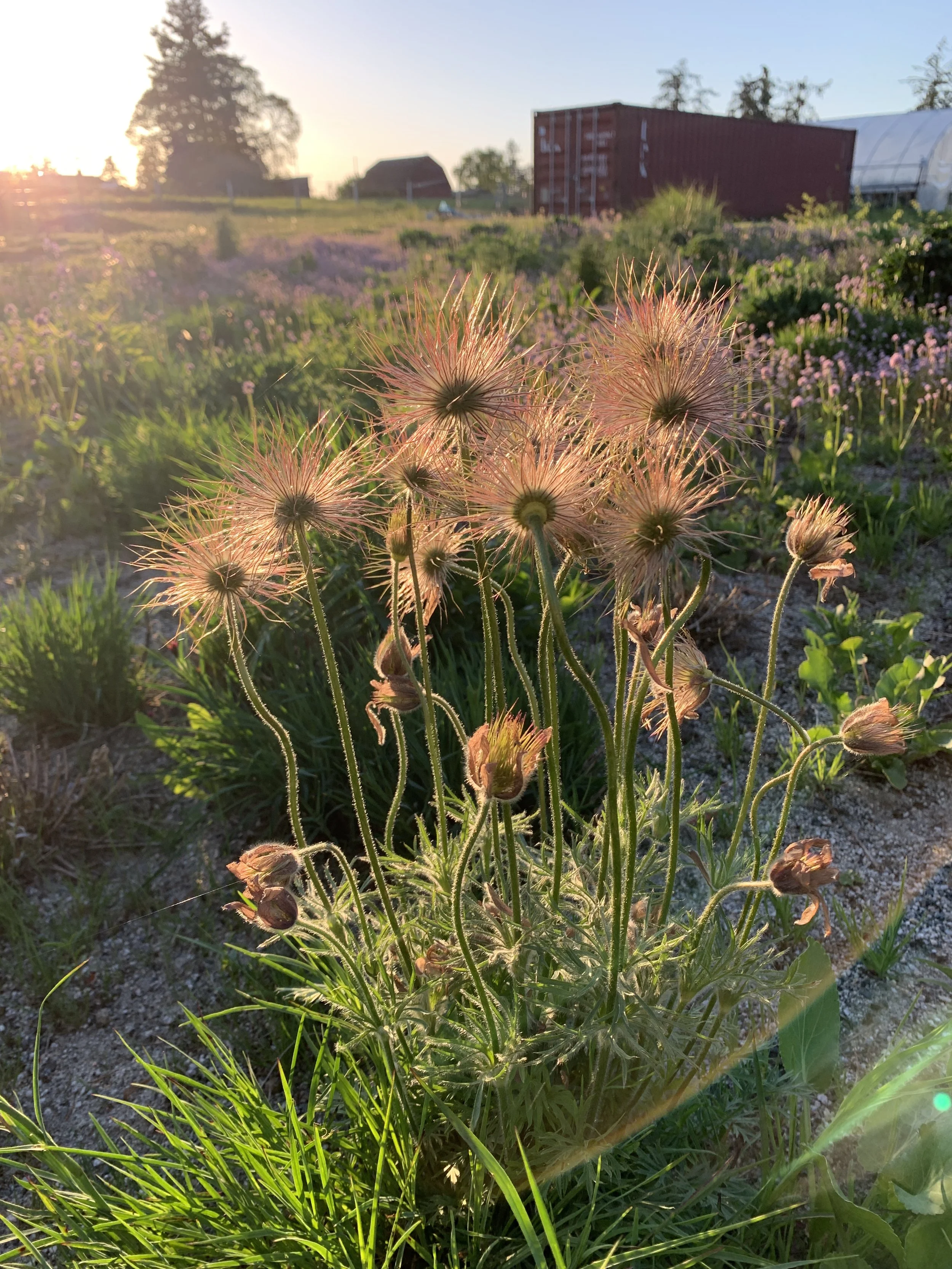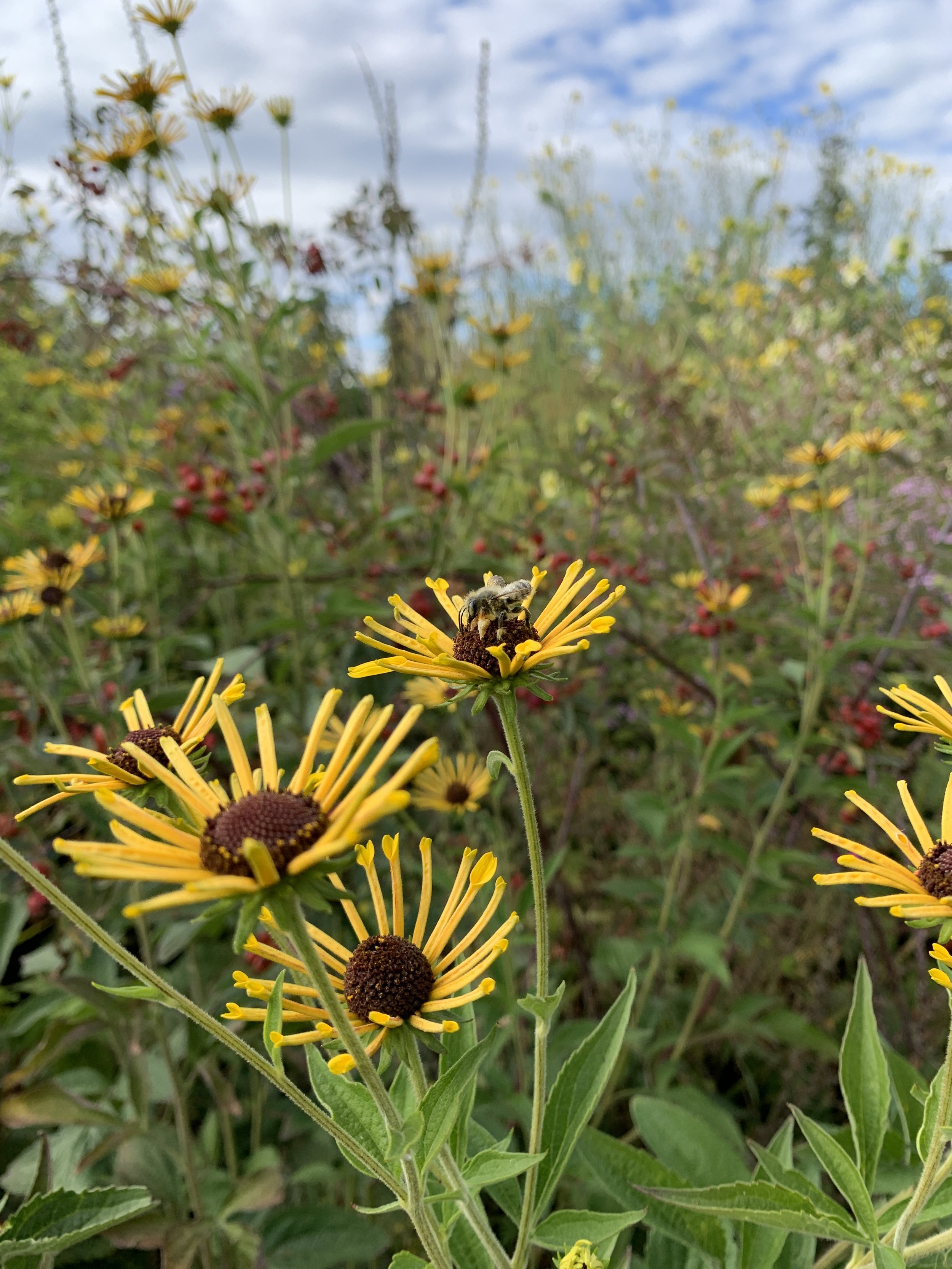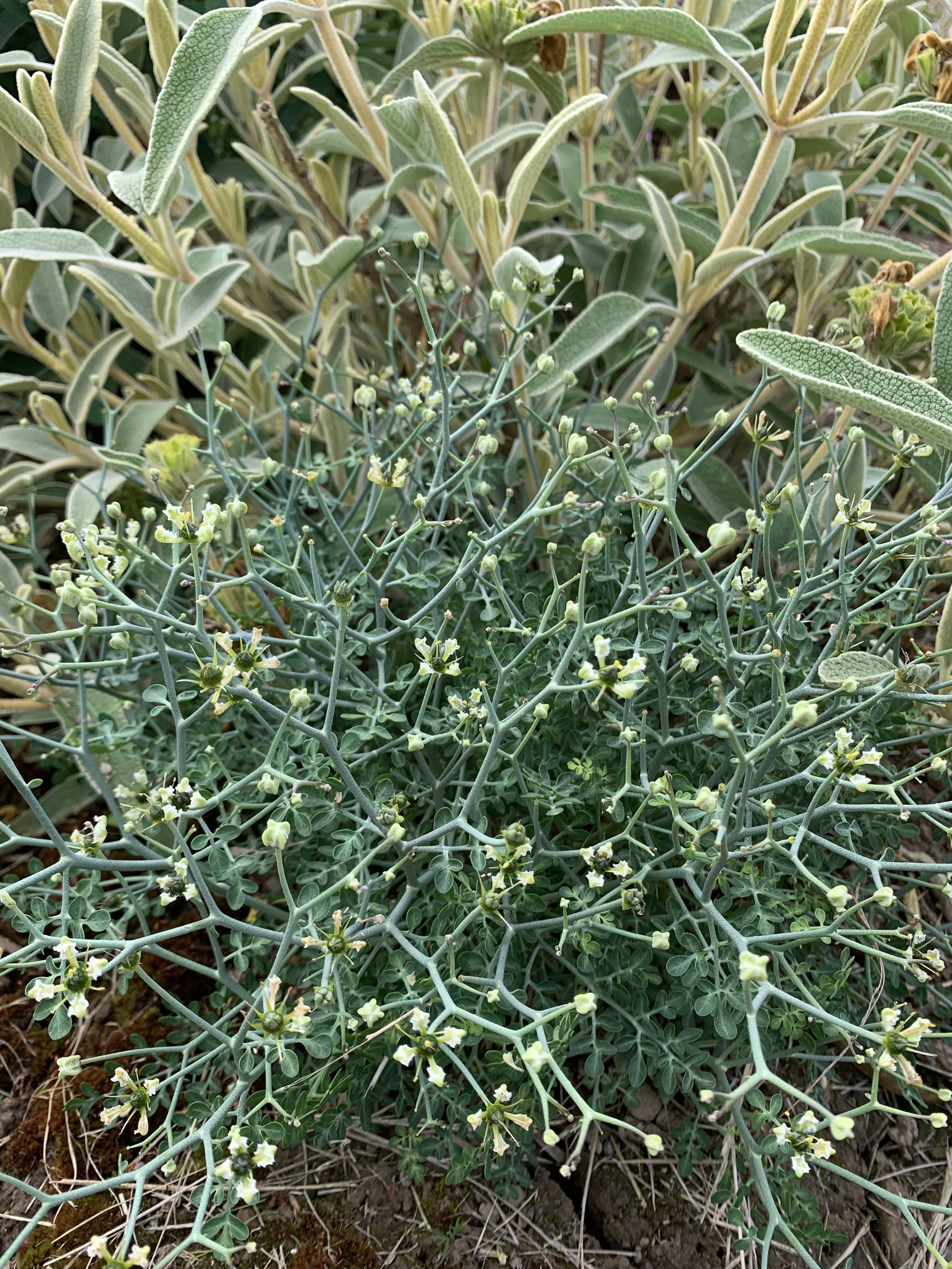Nepeta ‘Dawn to Dusk’ - A bushy mass of pale pink and cream flowers for much of the summer. Doesn’t flop about. Good pollinator plant. Sun, low water, height 60-90 cm.
Nepeta govaniana - A tall, yellow nepeta for part shade. What else do you need to know? The apple green foliage is nice, but then in late summer the graceful stems begin elongating, branching and dripping butter-tipped buds… A plant for fall breezes and slanted light. Equally good in a drift or allowed to thread through neighbouring plants. Part sun to sun, moist, height 90 cm.
Nepeta nepetella ssp. aragonensis - In dry, full sun conditions this nepeta stays compact. The silvery leaves and creamy flowers are really attractive, and of course the pollinators like it. In moister, shadier conditions this nepeta maintains foliage and flower colour but will grow substantially taller (to 60cm+). Sun, well-drained, drought tolerant, height 40 cm.
Nepeta nuda - Candelabras of tiny flowers in shades of white and blush (or sometimes a pale purple!). Unlike most other large nepetas as it tends to form a more narrow, very upright clump, and blooms intermittently through the summer without the need to cut it back. Does best with regular summer water but will tolerate low water conditions. Like all nepetas, this one is popular with pollinators. Sun, height to 120 cm.
Nepeta subsessilis ‘Pink Dreams’ - In mid-summer onwards, creamy buds open pink on this nepeta. Cut back after initial flowering to encourage re-bloom. Needs summer water to look its best. Sun to part sun, well-drained, height 50-60 cm.
Nepeta tuberosa - Nepeta are notorious for flopping around but not N. tuberosa. Its upright, purple flowers share a closer resemblance to a refined Agastache foeniculum than N. ‘Walker’s Low’ or indeed any other nepeta you’ll see in most gardens. With fuzzy, silvery green foliage that catches the light, a uniquely upright flower structure, and an incredible drought tolerance due to its tuberous roots, N. tuberosa is a great addition to the dry garden. It may go dormant in extended periods of heat, drought or cold, but will come back quickly when favourable conditions return. Sun, well-drained, drought tolerant, height 80 cm.
Nepeta yunnanensis - A large-flowered nepeta which prefers good soil and regular summer water to perform at peak, which is truly quite tall for a nepeta: 1.5 m! Sun, height 1-1.5 m.
Nigella ‘Albion Black Pod’ - A standout nigella for me last year, with white flowers that turn into dark purple inflated seed pods. Annual.
Oenothera ‘Lemon Sunset’ - Butter yellow flowers open in the evening and fade into apricot over the next 24 hours. Elongating stems take on a bit of a life of their own. A favourite, though short lived. Sun to part sun, drought tolerant, height 85 cm.
Oenothera lindheimeri Tall Form - Syn. Gaura lindheimeri. This particular seed was originally sent to me by Helen O’Donnell as a tall form, and indeed, they’ve reached 6 ft over the growing season in my garden. Flowers from early summer into frost. Self-sows. Pollinators like it. Sun, well-drained, drought tolerant, height 1.4 m+.
Oenothera macrocarpa ssp. incana - narrow leaf form - The shimmery silver foliage on this plant is hard to beat, and perfectly sets off the lemon yellow flowers. In my low water garden the plant has two big flushes, in early summer and autumn. Sun, well-drained, low water, height 20 cm.
Omphalodes linifolia - The most charming spring-flowering annual, like a white forget-me-not but with clearer flowers, bluish foliage and a fluffier habit. Let them froth about with poppies and Erigeron karvinskianus, or self-sow amongst brightly coloured cistus and helianthemums. They will self-sow happily, but seedlings are easy to remove. Sun, well-drained, drought tolerant, height 30-40 cm.
Origanum ‘Bristol Cross’ - This oregano hybrid has dripping bracts in pale pink that gradually fade to green and pale pink flowers. Can be a bit floppy due to sheer weight of the flowers. Looks better with some summer water. Pollinators love oregano. Sun, low water, height 30-60.
Origanum ‘Pilgrim’ - This laevigatum hybrid oregano is possibly my favourite for its long season of interest and deep colouring, as well as the tidy, glaucous leaves that form a dense clump. The bees love it, like all oreganos. Sun, drought tolerant, height 30-45 cm.
Origanum ‘Rosenkuppel’ - Since I like to use oreganos as cut flowers, I especially like the comparatively large size of Rosenkuppel’s flowers, as well as their sumptuous colouring. Looks best with some summer water. Pollinators love oregano. Sun, well-drained, drought tolerant, height 40-60 cm.
Origanum laevigatum ‘Herrenhausen’ - A beautiful oregano with dark stems and dark bracts, which make the rich pink flowers pop. Doesn’t flop, and due to the darkly coloured bracts, makes an impression in the garden well into autumn. Looks best with some summer water. Can be used as a cut. Pollinators love oregano. Sun, well-drained, drought tolerant, height 30-45 cm.
Origanum libanoticum - Creates an impressive mound but is arguably more beautiful trailing gracefully over the edges of a pot or wall (as demonstrated by Graham’s beautiful display in the photo!). Some summer water makes for extra wow factor. Pollinators love oregano. Sun, well-drained, drought tolerant, height 20-30 cm.
Photo by Graham Smyth
Origanum microphyllum - Tiny silver leaves and tiny pink flowers on wiry stems. For the front of the border. Sun, well-drained, drought tolerant, height 10-20 cm.
Origanum vulgare ‘Compactum’ - A low-growing form of culinary oregano with pale pink flowers. Does best with some summer water. Sun, well-drained, drought tolerant, height 25 cm.
Origanum vulgare ‘Ingolstadt’ - This oregano has bright green leaves and white flowers. Sun, well-drained, drought tolerant, height 45-60 cm.
Orlaya grandiflora - A favourite annual umbel. Great cut flower. Will self-sow and flower in late spring in dry conditions, but can be grown as a cut-and-come-again summer annual with water. Sun, height 40-60 cm.
Pachyphragma macrophyllum - I fell in love with this groundcover in the woodland at Beth Chatto’s and now have it tucked into a shady spot next to my front door. Toughs it out in dry shade and spreads happily in moister conditions via self-sowing (but seedlings are easy to remove). Rounded evergreen leaves, no matter the weather, and beautiful white Brassicaceae flowers in spring. Shade to part shade, low water, height 45 cm.
Papaver dubium ssp. lecoqii var. albiflorum - These seeds originally came from Beth Chatto’s, where this clear pink annual poppy self sows around the propagation tunnel. It was Great Dixter which gave it the common name ‘Beth’s Poppy,’ and also where you will find it charmingly bedded out each spring amongst forget-me-nots and species tulips. Self-sows generously in my garden for a showy display in spring. Sun, well-drained, drought tolerant, height 40 cm.
Papaver macrostomum ‘Black Magic’ - A super cool poppy that if grown well (not too hot, sunny, consistent water) will deliver flowers of deepest black. Annual, sun, height 30 cm+.
Patrinia monandra - Surprise! It’s a large, yellow umbel! I LOVE IT! This patrinia forms a large rosette of jagged green leaves and begins flowering in its second year. Stalks reaching 1.3 m hold layer upon layer of lacy yellow flowers, which leave behind beautifully bleached seed heads. Truly stunning with all kinds of perennials (Sanguisorba! Verbena! Agastache!) and grasses (Panicum! Eragrostis!). Will self-sow but seedlings are easy to remove. Needs average summer water. Sun or part sun, height of foliage 40 cm, height of flowers 1.3 m.
Patrinia scabiosifolia - Terrific garden perennial with bright yellow umbel flowers on upright green stems, basal foliage with cut leaves, flowers slightly fragrant. Pollinators like it and you can use it as a cut flower too! Sometimes takes a year off from flowering so plant a couple in a clump. Sun, low water, height to 120 cm.
Petunia axillaris - A fabulous, fabulous annual petunia for dry or irrigated plantings alike. Forms tall mounds of pure white, scented flowers for months. Very inspired by seeing it used en masse with other South American native flowers like Verbena bonariensis, but I actually first encountered it (and was given seeds) in the refined borders of the English garden Malverleys, where it was used to stunning effect with other species petunias. Never imagined I'd be this passionate about a petunia, but here we are. Sun, low water, height to 60 cm.
Phlomis cashmeriana - A beautiful purple flowered phlomis that Erik Flesicher shared with me. Appreciates some summer water but will cope without. Sun, drought tolerant, height 60 cm.
Photo by Erik Flesicher/Symbio Studio
Phlomis fruticosa - Grey-green leaves with a white underside form a nicely rounded mass, topped with abundant yellow flowers in May. There are some beautiful, shrubby specimens of this around town, some 5 ft+, but you can hack it back periodically to keep it smaller. Olivier Filippi recommends pruning phlomis in the rain to avoid the throat-irritating hairs on the foliage. Sun, drought tolerant, height to 1.5 m.
Phlomis italica - This shrubby phlomis is distinctive for its elongated, silvery grey leaves. Without water, it will shed its spring leaves and grow a summer set that are held upright, close to the stem. This has the double benefit of creating a mulch around the base, and reducing the surface area of the leaf exposed to the sun. The pink flowers in late spring are a lovely change from the usual yellow of the genus. Sun, well-drained, drought tolerant, height 60-80 cm.
The second photo shows Phlomis italica in the foreground and P. fruticosa in the background in late summer in the low water garden at HCP, maintained by John and Delphia.
Phlomis lycia - Leaves turn yellow-green in drought conditions over summer and looks incredibly decorative. Sun, well-drained, drought tolerant, height to 1 m.
Phlomis purpurea - Soft, grey, triangular leaves and mauve flowers. Sun, well-drained, drought tolerant, height to 1.2 m. Photo taken in Claire’s garden by Kara Delbrouck/Bilston Creek Horticulture
Phlomis russeliana - A rhizomatous phlomis with large heart-shaped leaves. Likes good soil and does better with summer water, but is tough enough to survive our dry period without if it has to. Hardier than most of the other phlomis offered. Sun to light shade, well-drained, drought tolerant, height to 1.2 m.
Phlomis samia - My new favourite phlomis. Basically the same growth habit/leaves (large, heart-shaped, hairy) as P. russeliana but with chic dusty pink and brown flowers. Can be used as a cut flower. Sun to light shade, well-drained, drought tolerant, height to 1 m.
Phlomis tuberosa (syn. Phlomoides tuberosa) - This phlomis is characterized by a base of large, tooth-edged green leaves and tall, narrow stalks ringed in small purple flowers. Not quite as drought tolerant, although seems to be fine without water as long as the soil is richer. Sun, well-drained, low water/drought tolerant, height 1.5m+.
Phlox ‘Branklyn’ - A strong-stemmed pinky purple phlox with a white eye. I grow phlox for cutting and this is a good variety. Sun to part sun, average to moist, well-drained, height 1.2 m.
Phlox ‘Hadspen’ - Comes to us via Philippe Levesque of Balmoral Gardens in New Brunswick. He is quite fond of this tall blue phlox with smaller flowers, reminiscent of P. divaricata. Sun, average to moist, well-drained, height to 1.4 m.
Phlox ‘Lichtspel’ - An Oudolf introduction that the Chicago Botanic Garden, in its exhaustive study on phlox, rated highly for attractive dark stems, mildew resistance, and general robustness. Pink with reddish eye. Sun, average to moist, well-drained, height to 1.4 m.
Phlox ‘Miss Pepper’ - A fun pink-on-pink phlox with extra large flower heads. Sun to part sun, average to moist, well-drained, height 1.2 m.
Phlox ‘Monica Lynden-Bell’ - A compact (by my standards anyways) border phlox with white flowers with a pale pink eye. Border phlox need rich soil and regular summer water. Sun to part shade, height 60-75 cm.
Phlox ‘Utopia’ - A Coen Jansen introduction that has comparatively large, pale pink flowers. Quite something if you can afford it regular summer water and space. Sun, height 1.5 m+.
Pimpinella major ‘Rosea’ - Pink! Umbel! PINK UMBEL!! A fun cut flower for early summer, and very pretty in the garden. Needs regular summer water. Sun to part shade, height 80-100 cm.
Pimpinella saunii? - This comes from Free Spirit Nursery. They are not sure of the species and neither am I. I suspect possibly it is a form of P. major, as the growth habits are quite similar, but P. saunii has paler pink flowers, almost white, and leaves with more pronounced teeth. It forms a rosette with a lower, flatter profile than P. major ‘Rosea.’ Good cut flower and, once again, a pink umbel, so no complaints from me!
Polemonium ‘Sonia’s Bluebell’ - Pretty blue bellflowers appear in mid-spring and carry into early summer, providing a few more weeks of bloom than most polemoniums, and sometimes reblooms late summer! Doesn't self-sow. A Carol Klein selection. Part shade to shade, height 50 cm.
Potentilla nepalensis ‘Miss Willmott’ - Salmon pink flowers for weeks in early summer. Cute strawberry leaves. Sun, low water, height 40 cm.
Primula elatior - The most drought tolerant primula. Does very well on my clay soil with low water. Part shade to shade, low water, height 20-30 cm.
Primula veris - This species, known commonly as ‘cowslip', has small, bright yellow flowers, held in clusters. Flowers in early to mid-spring. Does well on my clay soil with low water. Sun to part shade, low water, height 20-30 cm.
Primula veris ‘Hose-in-Hose’ - Old fashioned, classic, very yellow, spring! Does well on my clay soil with low water. Part shade, low water, height 15-30 cm.
Primula vulgaris - No offense, but sometimes you shouldn’t mess with the straight species. P. vulgaris is the perfect shade of yellow, and a robust plant. Does super well on my clay soil with low water. I cut it back sometime in late summer/autumn when the foliage has mostly died off due to drought. Will self-sow in decently irrigated conditions. Sun to part sun, low water, height 30 cm.
Pulsatilla rubra ssp. hispanica - A burgundy/almost-black flowered pulsatilla! Very cool!! Thanks to Erik Fleischer for sharing these seeds. Sun, low water, well-drained, height 15-30 cm.
Pulsatilla vulgaris - A classic - purple flowers that turn into the sweetest seed puffs. Beautiful fuzzy foliage. Good drainage and summer water will have this plant look its best, but it will survive full drought. Sun to part sun, well-drained, drought tolerant, height 30 cm.
Pulsatilla vulgaris ‘Rosen Glocke’ - Pink flowers with all the attendant silk of the genus. Good drainage and some summer water keep this plant happy. Sun to part sun, well-drained, low water (probably drought tolerant?), height 30 cm.
Rudbeckia subtomentosa ‘Henry Eilers’ - Distinctive, narrow petals and a softer shade of yellow, make this a more welcome rudbeckia in my garden. To each their own, of course! Sun to part sun, height 1.2 m.
Ruta corsica - Smooth, glaucus, fern-like, unpleasantly scented leaves and small, bright yellow flowers. Plant rue where its near evergreen foliage will contrast handsomely with other dry garden plants. Contact with leaves may cause dermatitis. Sun, well-drained, drought tolerant, height 40 cm



